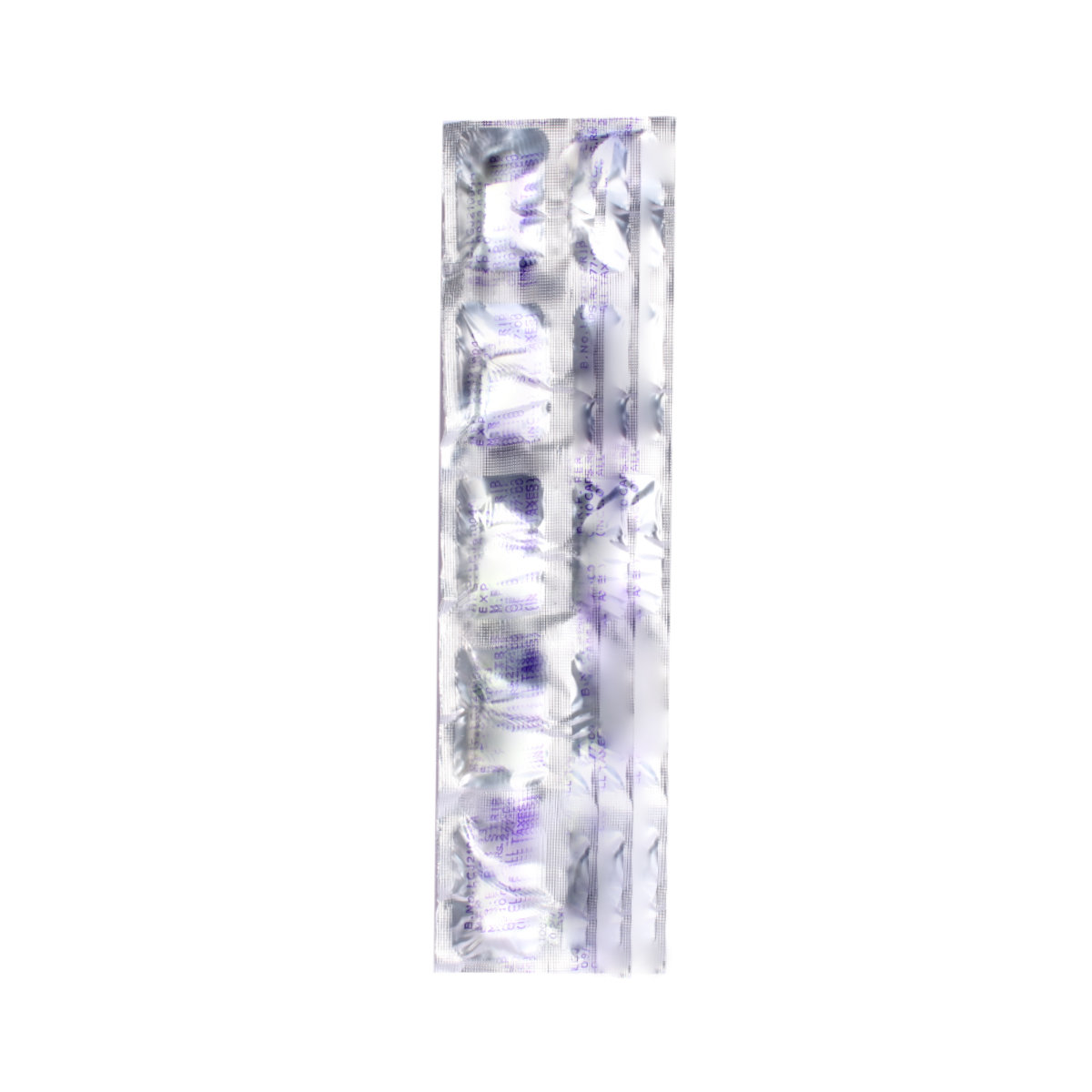Sefdin 300 mg Capsule
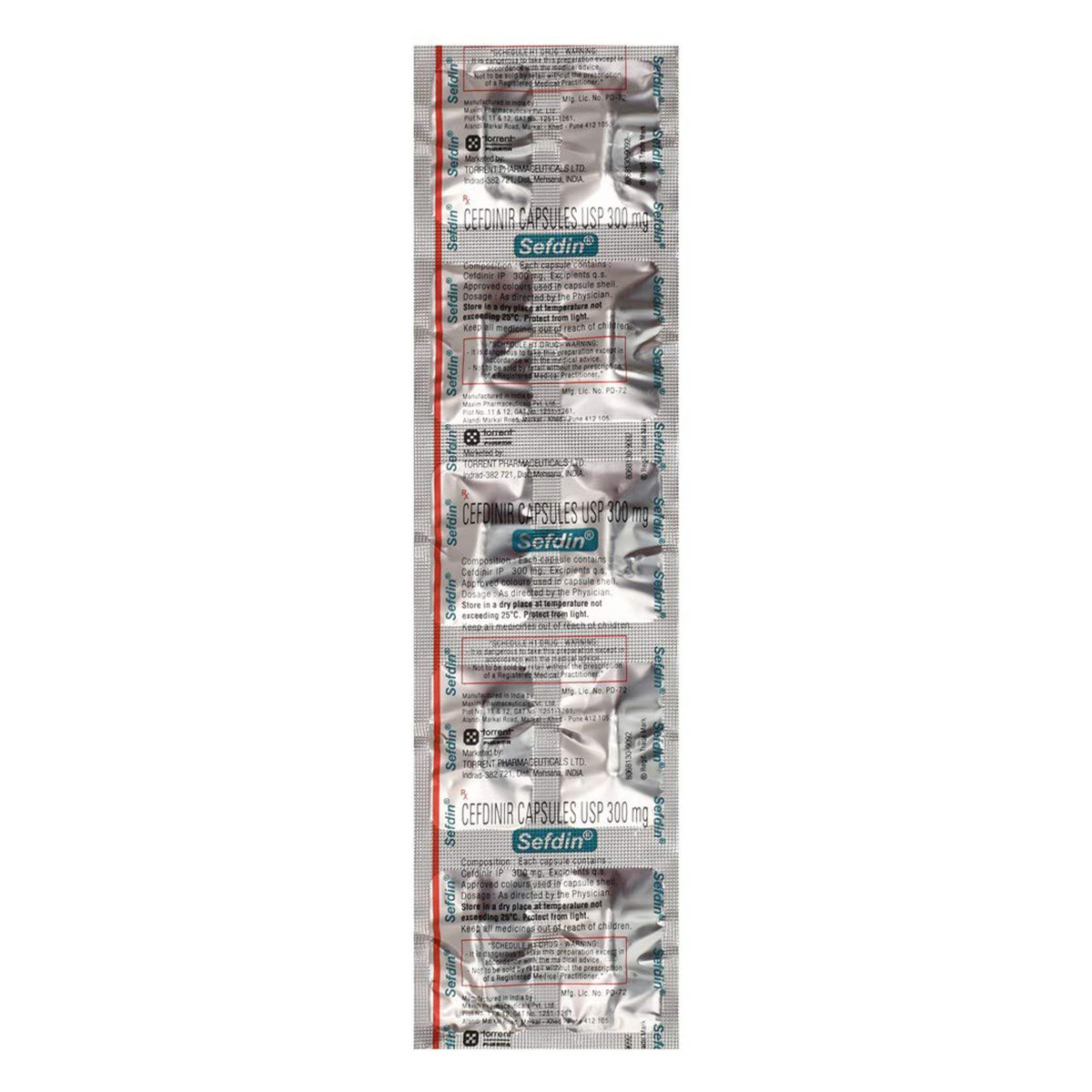
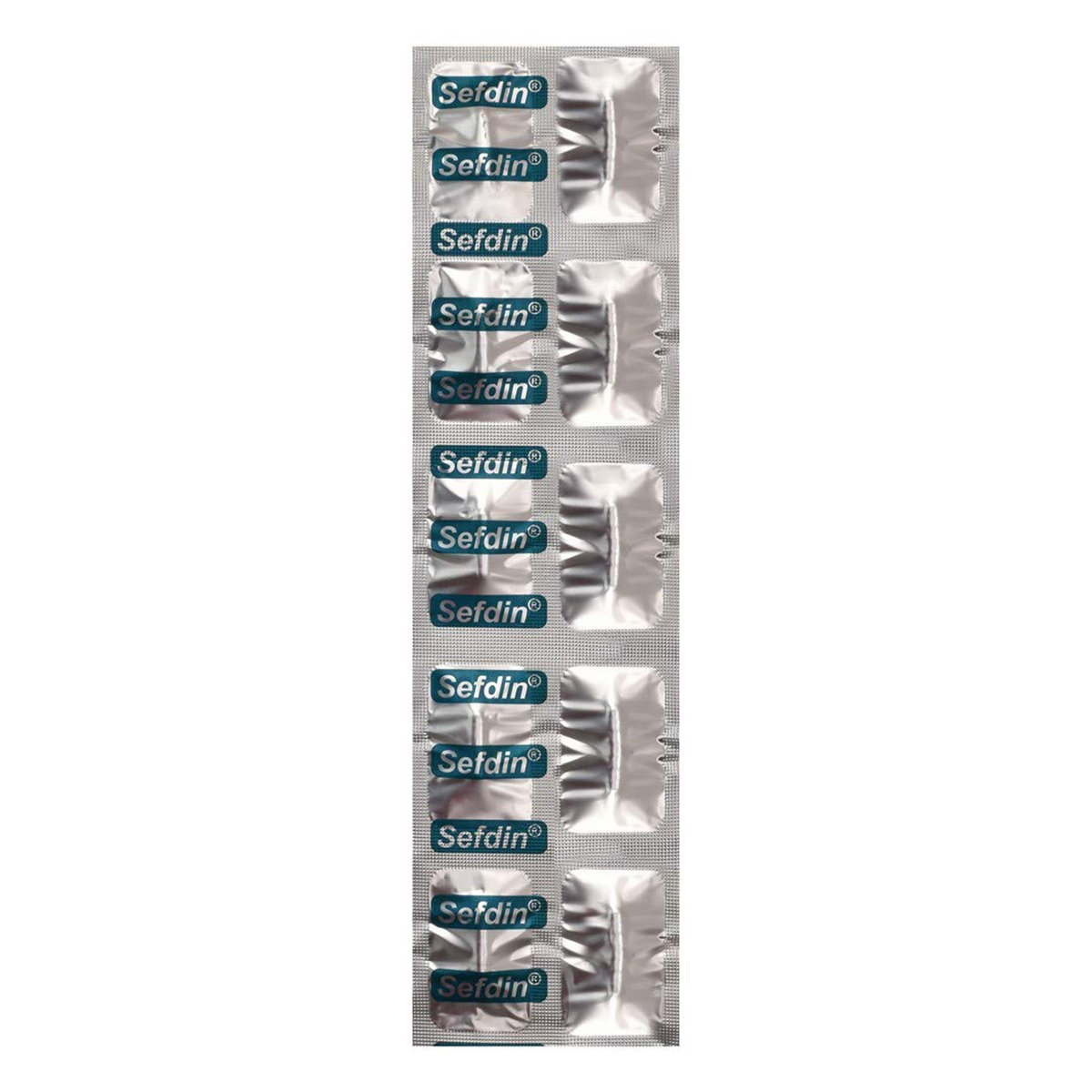
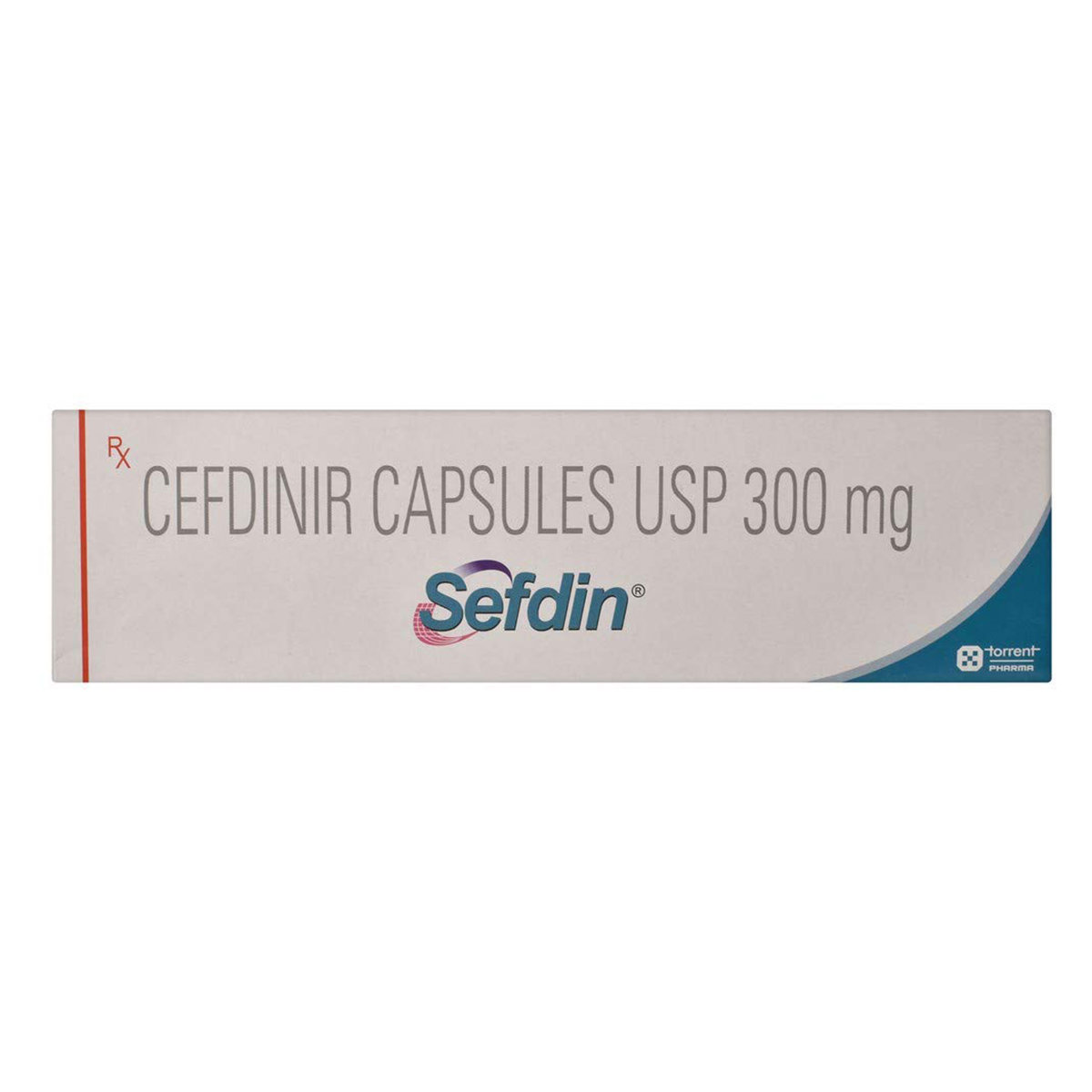
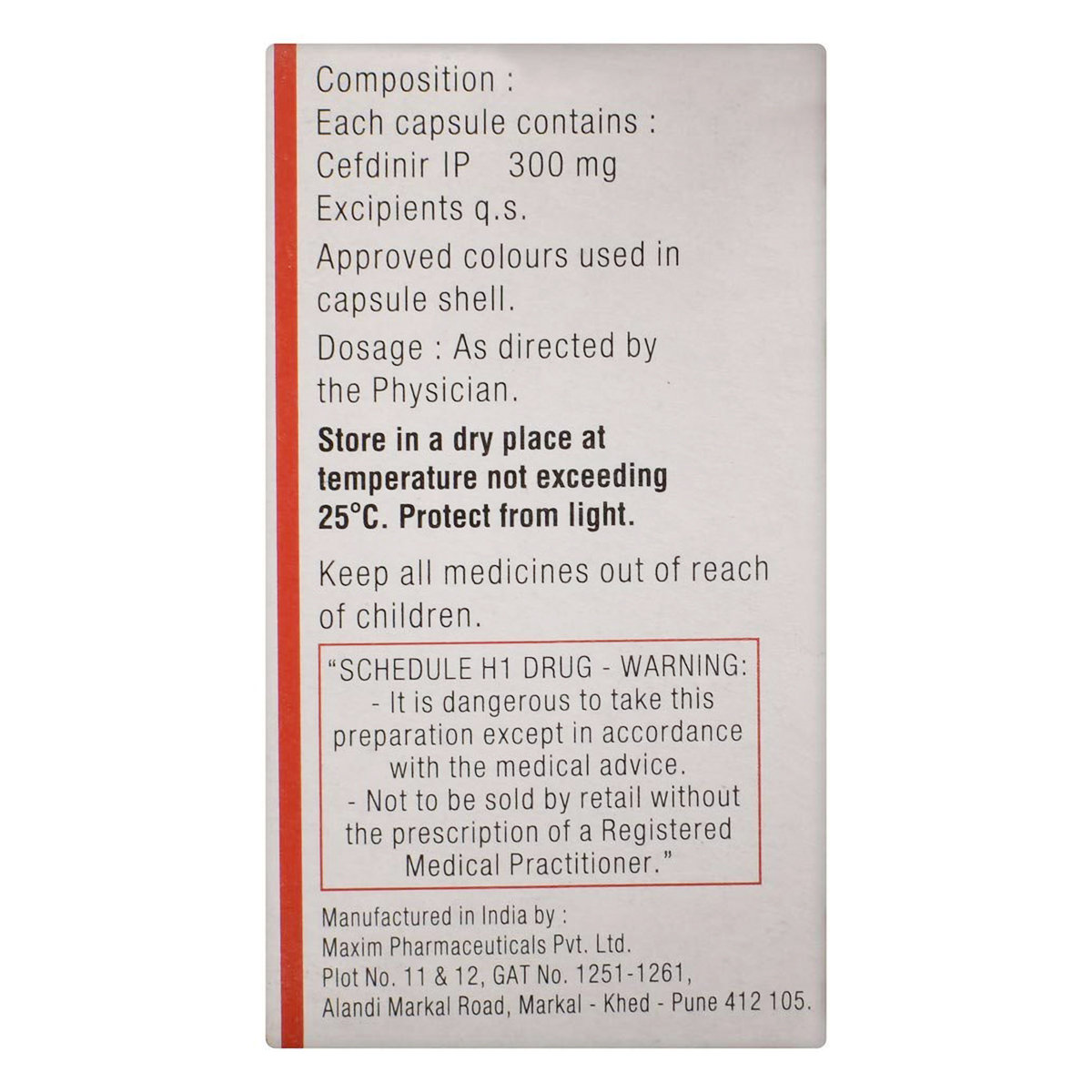
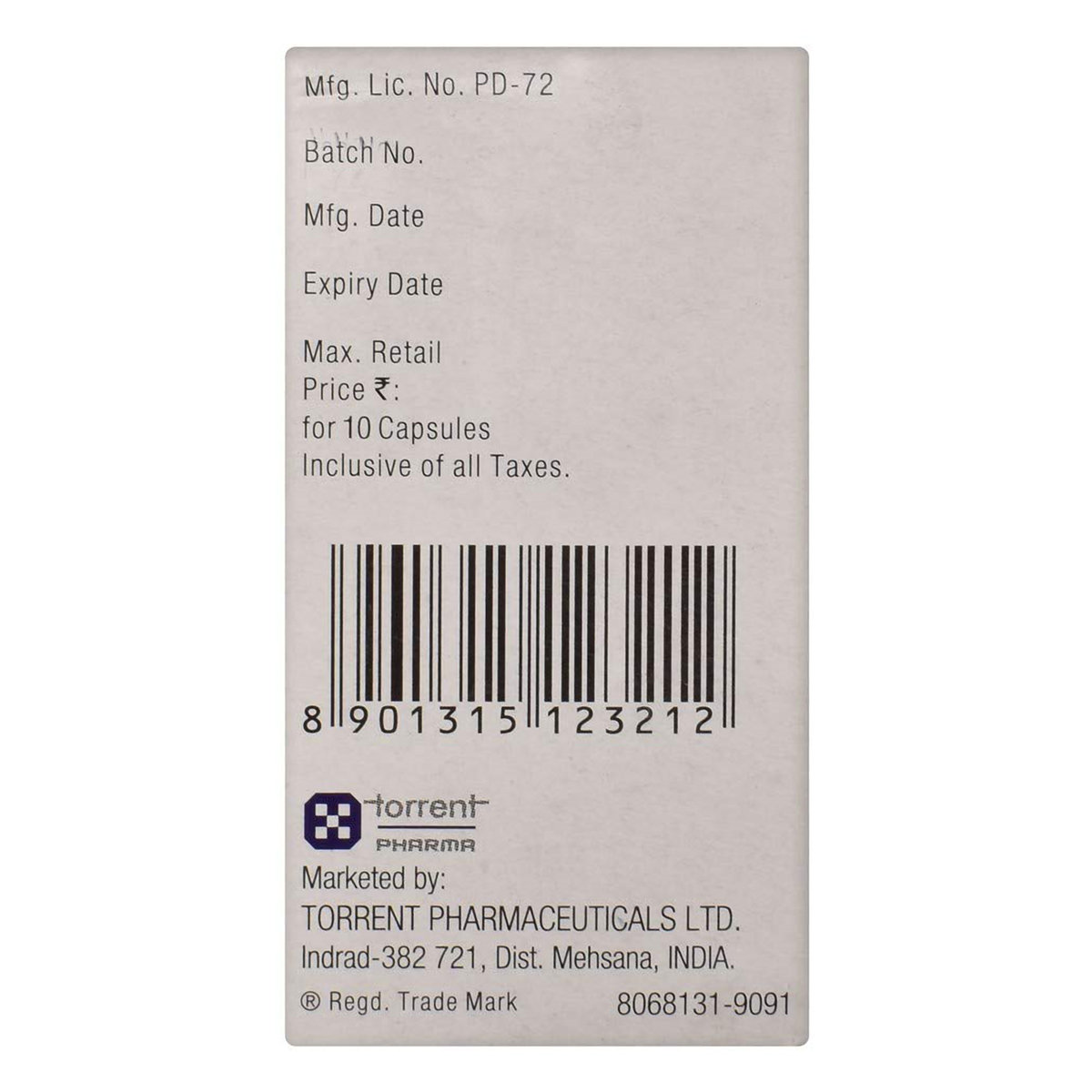
MRP ₹560.5
(Inclusive of all Taxes)
₹84.1 Cashback (15%)
know your delivery time
Provide Delivery Location
Composition :
Manufacturer/Marketer :
Consume Type :
Expires on or after :
Return Policy :
Selected Pack Size:10
10 ₹504.5
(₹50.45 per unit)
Out of stock
6 ₹302.4
(₹50.4 per unit)
Out of stock

Secure Payment

Trusted by 8 Crore Indians

Genuine Products
Therapeutic Class
Country of origin
Manufacturer/Marketer address
Author Details
We provide you with authentic, trustworthy and relevant information
Disclaimer
Alcohol
Safe if prescribed
Interaction of Sefdin 300 mg Capsule with alcohol is unknown. Please consult a doctor before consuming alcohol while using Sefdin 300 mg Capsule .
Pregnancy
Consult your doctor
Sefdin 300 mg Capsule is a category B pregnancy drug and is given to pregnant women only if the doctor thinks benefits outweigh risks. Please consult a doctor if you are pregnant or planning for pregnancy.
Breast Feeding
Consult your doctor
It is unknown whether Sefdin 300 mg Capsule is excreted in human milk. Sefdin 300 mg Capsule is given to breastfeeding mothers if the doctor thinks benefits are greater than risks. Please consult a doctor if you are breastfeeding.
Driving
Safe if prescribed
Sefdin 300 mg Capsule may cause dizziness in some people. Therefore, avoid driving if you feel dizzy after taking Sefdin 300 mg Capsule .
Liver
Consult your doctor
If you have any concerns regarding the use of Sefdin 300 mg Capsule in patients with liver problems, please consult a doctor.
Kidney
Consult your doctor
Take Sefdin 300 mg Capsule with caution, especially if you have a history of Kidney diseases/conditions. The dose may be adjusted by your doctor as required.
Children
Safe if prescribed
Sefdin 300 mg Capsule is not recommended for babies below 6 months of age as the safety and effectiveness were not established.
Product Substitutes
About Sefdin 300 mg Capsule
Sefdin 300 mg Capsule belongs to a class of medication called 'antibiotics' used to treat several bacterial infections of the urinary tract, bones and joints, heart, lungs, brain, chest, ears, skin or soft tissues. The bacterial infection is a condition in which harmful bacteria grows in the body and cause infection. It can infect any part of the body and multiple very quickly. Sefdin 300 mg Capsule does not work against infections caused by a virus such as flu or a common cold.
Sefdin 300 mg Capsule contains 'Cefdinir' a cephalosporin antibiotic that works by interfering with the formation of the bacterial cell wall (a protective covering) necessary for their survival. Thereby damages the bacterial cell wall and kills bacteria.
Take Sefdin 300 mg Capsule as prescribed by your doctor. You are advised to take Sefdin 300 mg Capsule for as long as your doctor has prescribed it for you based on your medical condition. In some cases, you may experience diarrhoea, nausea, stomach pain, vomiting, rash, headache or vaginal itching or discharge. Most of these side effects of Sefdin 300 mg Capsule do not require medical attention and gradually resolve over time. However, if the side effects persist or worsen, please consult your doctor.
If you are allergic to Sefdin 300 mg Capsule , cephalosporin antibiotics or any other medicines, please tell your doctor. If you are pregnant or breastfeeding, inform your doctor before taking Sefdin 300 mg Capsule . Sefdin 300 mg Capsule is not recommended for babies below 6 months of age as the safety and effectiveness were not established. Drive only if you are alert as Sefdin 300 mg Capsule may cause dizziness. You are advised to maintain a time gap of a minimum of 2 hours between taking Sefdin 300 mg Capsule and antacids containing aluminium, magnesium, iron supplements and multivitamins containing iron. These may reduce the absorption of Sefdin 300 mg Capsule by the body.
Uses of Sefdin 300 mg Capsule
Medicinal Benefits Mweb
Key Benefits
Sefdin 300 mg Capsule contains Cefdinir a cephalosporin antibiotic used in the treatment of several bacterial infections. Cefdinir is a broad-spectrum antibiotic that acts against both aerobic (grow in the presence of oxygen) and anaerobic (grow in the absence of oxygen) gram-negative and gram-positive bacteria. It interferes with the formation of the bacterial cell wall (a protective covering) that is necessary for their survival. Thereby damages the bacterial cell wall and kills bacteria.
Directions for Use
Side Effects of Sefdin 300 mg Capsule
- Diarrhoea
- Nausea
- Stomach pain
- Vomiting
- Rash
- Headache
- Vaginal itching or discharge
Drug Warnings
If you are allergic to Sefdin 300 mg Capsule , cephalosporin antibiotics or any other medicines, please tell your doctor. If you have kidney problems or inflammation of the large intestine, inform your doctor before taking Sefdin 300 mg Capsule . If you are pregnant or breastfeeding, consult a doctor before taking Sefdin 300 mg Capsule . Sefdin 300 mg Capsule is not recommended for babies below 6 months of age as the safety and effectiveness were not established. Drive only if you are alert as Sefdin 300 mg Capsule may cause dizziness. You are recommended to complete the full course of Sefdin 300 mg Capsule as prescribed by your doctor for effective results. Sefdin 300 mg Capsule may interact with specific tests such as glucose (sugar) in urine and coomb’s test, giving false-positive results. Therefore, inform your doctor that you are taking Sefdin 300 mg Capsule before undergoing any tests. You are advised to maintain a time gap of a minimum of 2 hours between taking Sefdin 300 mg Capsule and antacids containing aluminium, magnesium, iron supplements and multivitamins containing iron. These may reduce the absorption of Sefdin 300 mg Capsule by the body.
Drug-Drug Interactions
Drug-Drug Interactions
Login/Sign Up
Taking Sefdin 300 mg Capsule with BCG vaccine may reduce the effects of BCG vaccine.
How to manage the interaction:
Taking Sefdin 300 mg Capsule with BCG vaccine is not recommended, but it can be taken if prescribed by a doctor. However, if you experience any unusual symptoms contact your doctor immediately. Do not discontinue any medications without consulting a doctor.
Taking Sefdin 300 mg Capsule with lepirudin may reduce the beneficial effects of therapy.
How to manage the interaction:
Although taking Sefdin 300 mg Capsule and Lepirudin together can evidently cause an interaction, it can be taken if your doctor has suggested it. Do not stop using any medications without first talking to your doctor.
Taking Sefdin 300 mg Capsule with argatroban may lead to increase in the effects of Argatroban.
How to manage the interaction:
Although taking Sefdin 300 mg Capsule and Argatroban together can evidently cause an interaction, but it can be taken if prescribed by a doctor. In case you experience any side effects like chest tightness, shortness of breath, swelling of legs, or palpitations, consult a doctor. Do not stop using any medications without first talking to your doctor.
Taking Sefdin 300 mg Capsule with Cholera vaccine can reduce the activity of the Cholera vaccine.
How to manage the interaction:
Taking Sefdin 300 mg Capsule with Cholera, live attenuated together can possibly result in an interaction, but it can be taken if your doctor has advised it. However, if you experience unusual symptoms contact your doctor immediately. Do not stop using any medications without first talking to your doctor.
Taking Sefdin 300 mg Capsule with heparin may enhance the effects of heparin by anticoagulation(preventing blood from clotting).
How to manage the interaction:
Although taking Sefdin 300 mg Capsule and Heparin can cause an interaction, it can be taken if a doctor has suggested it. In case you experience aby unusual effects like lightheadedness, dizziness, unusual bruising, bleeding tendencies, blood in stools or urine, consult a doctor. Do not stop using any medications without a doctor's advice.
Taking Sefdin 300 mg Capsule with bivalirudin may increase the effects of bivalirudin.
How to manage the interaction:
Although taking Sefdin 300 mg Capsule and Argatroban together can evidently cause an interaction, but it can be taken if prescribed by a doctor. In case you experience any side effects like chest tightness, shortness of breath, swelling of legs, or palpitations, consult a doctor. Do not stop using any medications without first talking to your doctor.
Taking Sefdin 300 mg Capsule with dalteparin together may decrease the therapeutic effects of dalteparin.
How to manage the interaction:
Although taking Sefdin 300 mg Capsule and dalteparin can evidently cause an interaction, it can be taken if your doctor has suggested it. In case you experience aby unusual effects like lightheadedness, dizziness, unusual bruising, bleeding tendencies, blood in stools or urine, consult a doctor. Do not stop using any medications without a doctor's advice.
Taking fondaparinux and Sefdin 300 mg Capsule may increase the effects of fondaparinux.
How to manage the interaction:
Although taking Sefdin 300 mg Capsule and Fondaparinux can evidently cause an interaction, it can be taken if your doctor has suggested it. In case you experience aby unusual effects like lightheadedness, dizziness, unusual bruising, bleeding tendencies, blood in stools or urine, consult a doctor. Do not stop using any medications without a doctor's advice.
Drug-Food Interactions
Drug-Food Interactions
Login/Sign Up
Avocado, Beetroot, Cereals, Cheese, Chicken, Black Beans, Eggs, Clams, Chickpea, Whole Grains, Shellfish, Spinach, Salmon, Red Meat, Oysters, Potatoes, Kidney Beans, Mackerel, Milk, Kale, Tuna, Yogurt, Liver, Low-Fat Milk, Trout, Fortified Breakfast Cereal, Fish, Beef
How to manage the interaction:
Sefdin 300 mg Capsule and multivitamin with minerals should not be taken orally at the same time. Iron-containing products decreases the effects of Sefdin 300 mg Capsule. Although there is an interaction between Sefdin 300 mg Capsule and multivitamins, it can be taken if advised by a doctor. It should be taken two hours either before or after the dosage of the multivitamin with minerals.
Drug-Diseases Interactions
Drug-Diseases Interactions
Login/Sign Up
Drug-Drug Interactions Checker List
- PROBENECID
Habit Forming
Special Advise
If you are about to undergo any blood or urine tests, inform your doctor that you are taking Sefdin 300 mg Capsule as it may interfere with urine test (for sugar) and Coomb’s test (blood test).
Diet & Lifestyle Advise
- Take probiotics after completing the full course of Sefdin 300 mg Capsule to restore some healthy bacteria in the intestines that may have been killed. Taking probiotics after antibiotic treatment can reduce the risk of antibiotic-associated diarrhea.
- Certain fermented foods like cheese, yogurt, kombucha, sauerkraut, and kimchi can help to restore the good bacteria of the intestine.
- Include fiber-rich foods, as they can be easily digested by your gut bacteria, which helps stimulate their growth. Thus, fiber-rich foods may help restore healthy gut bacteria after a course of antibiotics. Whole grains such as brown rice and whole-grain bread should be included in your diet.
- Make sure you drink plenty of water or other fluids every day while you are taking Sefdin 300 mg Capsule .
- Avoid alcohol consumption as it may increase adverse effects.
All Substitutes & Brand Comparisons
RX
Out of StockNot for online saleALDINIR 300MG CAPSULE
Alembic Pharmaceuticals Ltd
₹19.7
(₹4.43 per unit)
91% CHEAPERRX
Out of StockNot for online saleCefdipar 300mg Capsule
Parenteral Drugs India Ltd
₹81.25
(₹18.28 per unit)
63% CHEAPERRX
Out of StockNot for online saleADCEF 300MG CAPSULE
Torrent Pharmaceuticals Ltd
₹205
(₹18.45 per unit)
63% CHEAPER

Have a query?
Buy best Infections & Infestation products by
Cipla Ltd
Macleods Pharmaceuticals Ltd
Alkem Laboratories Ltd
Lupin Ltd
Abbott India Ltd
Sun Pharmaceutical Industries Ltd
Mankind Pharma Pvt Ltd
Micro Labs Ltd
Aristo Pharmaceuticals Pvt Ltd
FDC Ltd
Intas Pharmaceuticals Ltd
Glenmark Pharmaceuticals Ltd
Ipca Laboratories Ltd
Torrent Pharmaceuticals Ltd
Zydus Healthcare Ltd
Biochem Pharmaceutical Industries Ltd
Zuventus Healthcare Ltd
United Biotech Pvt Ltd
Hetero Drugs Ltd
Emcure Pharmaceuticals Ltd
Alembic Pharmaceuticals Ltd
Indoco Remedies Ltd
Fusion Health Care Pvt Ltd
Dr Reddy's Laboratories Ltd
Leeford Healthcare Ltd
Cadila Healthcare Ltd
Wockhardt Ltd
Zydus Cadila
GlaxoSmithKline Pharmaceuticals Ltd
Morepen Laboratories Ltd
Blue Cross Laboratories Pvt Ltd
Cadila Pharmaceuticals Ltd
Converge Biotech Pvt Ltd
Elder Pharmaceuticals Ltd
Hetero Healthcare Pvt Ltd
Pfizer Ltd
AAA Pharma Trade Pvt Ltd
Gufic Bioscience Ltd
Mylan Pharmaceuticals Pvt Ltd
Corona Remedies Pvt Ltd
Wallace Pharmaceuticals Pvt Ltd
Apex Laboratories Pvt Ltd
Medishri Healthcare Pvt Ltd
Akumentis Healthcare Ltd
Alniche Life Sciences Pvt Ltd
Hegde & Hegde Pharmaceutica Llp
Veritaz Healthcare Ltd
Ranbaxy Laboratories Ltd
Koye Pharmaceuticals Pvt Ltd
Shreya Life Sciences Pvt Ltd
Overseas Health Care Pvt Ltd
Biocon Ltd
Indchemie Health Specialities Pvt Ltd
Medley Pharmaceuticals Ltd
Brinton Pharmaceuticals Ltd
J B Chemicals & Pharmaceuticals Ltd
Unifaith Biotech Pvt Ltd
Ajanta Pharma Ltd
Biochemix Health Care Pvt Ltd
Natco Pharma Ltd
Samarth Life Sciences Pvt Ltd
Unichem International
Laborate Pharmaceuticals India Ltd
Unipark Biotech Pvt Ltd
Zymes Bioscience Pvt Ltd
Indiabulls Pharmaceuticals Pvt Ltd
Neon Laboratories Ltd
Vasu Organics Pvt Ltd
DR Johns Lab Pharma Pvt Ltd
East West Pharma India Pvt Ltd
La Renon Healthcare Pvt Ltd
Medgen Drugs And Laboratories Pvt Ltd
Novartis India Ltd
Canixa Life Sciences Pvt Ltd
Icarus Health Care Pvt Ltd
Lincoln Pharmaceuticals Ltd
Celon Laboratories Pvt Ltd
Concept Pharmaceuticals Ltd
Klm Laboratories Pvt Ltd
Nicholas Piramal India Ltd
Systopic Laboratories Pvt Ltd
Yuventis Pharmaceuticals
Capital Pharma
German Remedies Ltd
Pristine Pearl Pharma Pvt Ltd
Unison Pharmaceuticals Pvt Ltd
Aurz Pharmaceutical Pvt Ltd
Clover Health Care Pharma
Kepler Healthcare Pvt Ltd
Allites Life Sciences Pvt Ltd
Auspharma Pvt Ltd
Intra Life Pvt Ltd
Jolly Healthcare
Linux Laboratories Pvt Ltd
Ozone Pharmaceuticals Ltd
Cachet Pharmaceuticals Pvt Ltd
Comed Chemicals Ltd
Delcure Life Sciences Ltd
Fresenius Kabi India Pvt Ltd
Khandelwal Laboratories Pvt Ltd
Customers Also Bought






